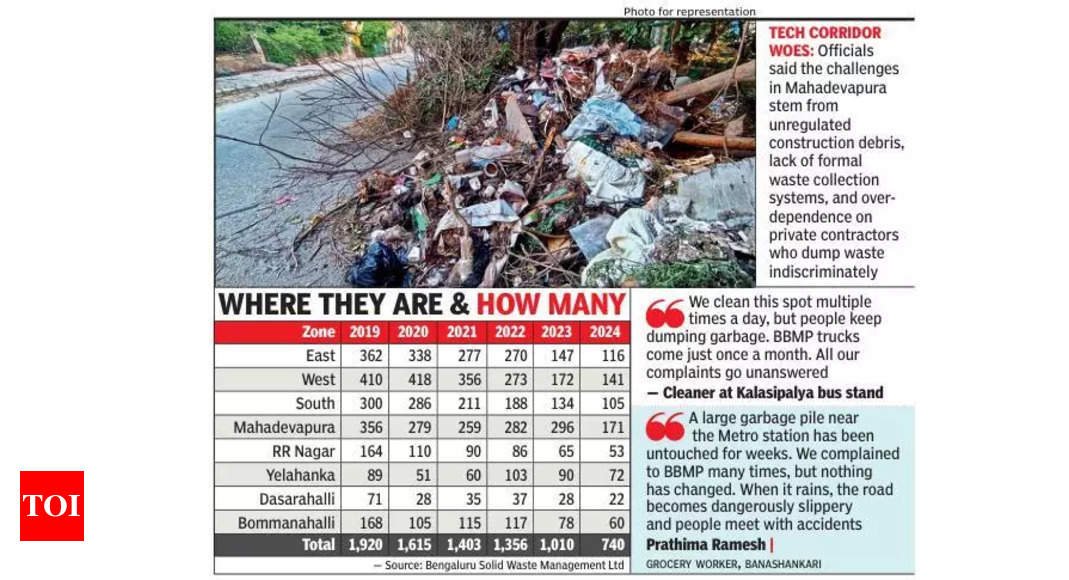Bengaluru’s Black Spots: A 6-Year Journey of Improvement
Significant Reduction in Black Spots
Bengaluru has made impressive progress in reducing black spots, areas with poor sanitation and waste management. According to data from Bengaluru Solid Waste Management Ltd (BSWML), the number of black spots cleared daily across the city dropped from 1,920 in 2019 to 740 in 2024.
- 2019: 1,920 black spots
- 2020: 1,615 black spots (16% decrease)
- 2021: 1,403 black spots (13% decrease)
- 2022: 1,356 black spots (3.4% decrease)
- 2023: 1,010 black spots (25% decrease)
- 2024: 740 black spots (27% decrease)
Zone-wise Improvement
Most zones in Bengaluru have shown significant improvement over time:
- East zone: Hebbal, Shivajinagar, and Shanthinagar divisions saw a decrease from 362 black spots in 2019 to 116 in 2024.
- South zone: The count fell from 300 to 105 in the same period.
- Dasarahalli zone: One of the steepest declines, from 71 in 2019 to just 22 in 2024.
- West Bengaluru: A sharp drop from 410 black spots in 2019 to 141 in 2024.
The Mahadevapura Challenge
Mahadevapura zone is an exception, showing a worrying upward trend till last year. The number of black spots increased to 296 in 2023 before reducing to 171 in 2024. Challenges in this zone include unregulated construction debris, lack of formal waste collection systems, and over-dependence on private contractors.
Factors Contributing to Improvement
Civic officials credit the overall improvement to:
- Increased surveillance by marshals
- Introduction of ward-level monitoring
- Effectiveness of citizen reporting tools such as BBMP Sahaaya
- Penalties for dumping
- Awareness campaigns
- Greater coordination with contractors



